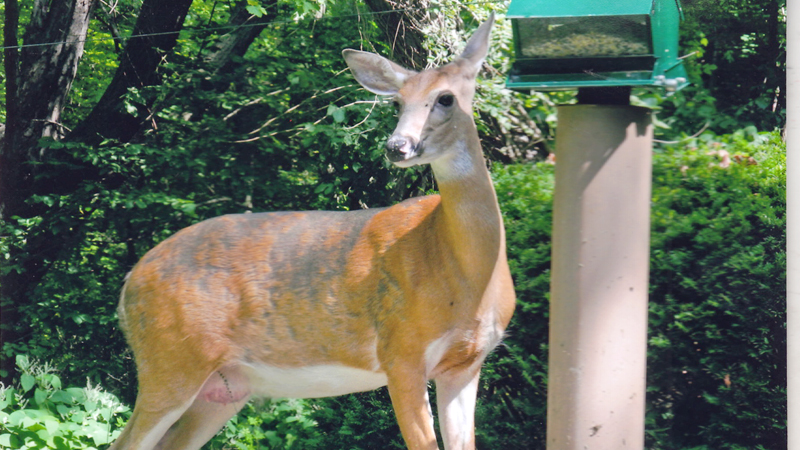Here’s how to keep Bambi from garden

By Haley Shoemaker
OSU Ext. program csoordinator
Imagine: It’s a beautiful summer day, the birds are chirping, the leaves are gently swaying, and your garden is growing right on schedule.
All is perfect – that is, until you notice a large portion missing from the hosta alongside the house and some bark rubbed off your favorite tree. While the restructuring of your hosta may be due to plant health problems and the missing bark may be the result of your dog chasing a squirrel up the tree, the more likely culprit is Bambi in search of a scratch and a midnight snack. Damage like this, though annoying, is not uncommon and can be managed with preventative measures.
Fortunately, there are many options for you as a homeowner when it comes to deer control. Determining which will be most effective depends on your answer to the following questions: Is this the first time you’ve noticed the damage? If not, how widespread has it become? Depending on these answers, your mode of action may range from repellents to habitat modification or fencing. Another factor to consider is frequency; if this is the first offense, the proper route of action will be to wait and track recurrences. If it really was a one-time deal, paying for repellents or fencing may not be cost-effective.
A few nibbles here and there may not merit a fence installation, but if moderate damage continues, some repellents or habitat modifications are a good place to start. According to Marne Titchenell, OSU Extension wildlife specialist, repellents fall into two categories, odor (garlic oil) and taste (hot pepper), both being effective when populations are low. Habitat modification can be as simple as planting some daffodils or ferns, which deer do not find appetizing. If neither of these approaches is doing the job, then it may be time to think of fencing.
Deer fences are most often seen around agricultural fields and fruit farms, primarily to protect high value crops. A backyard deer fence won’t need to be as extreme as crop fences, but can be just as effective. For most situations, a simple two-dimensional design will suffice. With two levels of fence spaced three feet apart, deer are less likely to jump over or attempt going under the fence because of its’ perceived depth, notes Titchenell. Should the deer in question prove more persistent than your fencing, it may be time to talk the Ohio Department of Wildlife to obtain a deer damage permit.
Though it can appear daunting, preventing and managing deer damage is quite doable with repellents, habitat modification and fencing. So if your hosta happens to fall victim to Bambi and the family, don’t be discouraged, just monitor and manage!
To learn more about control options, including those for rabbits, go to: http://go.osu.edu/habitatmodification.
 43
43
